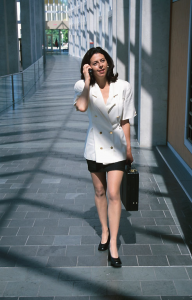I was listening in to a webinar on trends in higher education. The speakers had been looking at different higher ed pedagogy models, within and external to institutions. It became clear that there was a significant gap between a focus on meeting corporate needs and the original goals of education. Naturally, it got me to think, and one link was, not surprisingly, wisdom. So what does that mean?
In the ‘code academy’ models that are currently challenging to higher education, there’s very much a ‘career’ focus. That is, they’re equipping students to be ready to take jobs. Which is understandable, but there’s a gap. A not-for-profit initiative I was involved with wanted to get folks a meaningful job. My point was that I didn’t want them to get a job, I wanted them to keep a job! And that means also learning about learning to learn skills, and more. That more is where we make a substantial shift.
The shift I want to think about is not just what corporations need, but what society needs. The original role of institutions like Oxford and Harvard was to create the next generation leaders of society. That is, to give the philosophical (in the broad sense) and historical perspective to let them do thinking like what delivered the US Constitution (as an example). And there’s plenty of lip service to this, but little impact. For example, look at the success of teaching ethics separately from other business classes…let’s move on.
It seems like there’s several things we need to integrate. As pointed out, treating them separately doesn’t work. So how do we integrate them and make them relevant. Let’s take Sternberg’s model of Wisdom, where you think about decisions:
- for the short term and long term
- for you, yours, and society as a whole
- and also explicitly discuss the value assumptions underpinning the decision.
This gives us a handle. We need to find ways to naturally embed these elements into our tasks. Our tasks need to require 21C skills and understanding the societal context as well.
In my ‘application-based instruction’ model, I talk about giving learners challenges that do require 21 C skills in natural ways. In this model, tasks mimic world tasks, asking for things like presentations, RFPs, problem recommendations, and more. Then, how do we also include the societal aspects? I suppose by putting those decisions in situations where there are implications not just for the business but for society.
Ok, it may be too much to layer this on every assignment (major assignment, not the accompanying knowledge check), but it should be covered in every subject (yes, even introductory) in some way. This thinking has already led me to create a question on evaluating policy tradeoffs for the mobile course I’m developing.
We need to keep the societal implications involved. Ensuring that at least a subset of the assignments do that is one approach. Doing so in a natural way requires some extra thinking, but the consequences are better. Particularly if the instructor actually makes a point of it (making a note to myself…). A separate course doesn’t do it. So let’s get wise, and develop in deeper ways that will deliver better outcomes in the domain, and for the greater good. Shall we?


